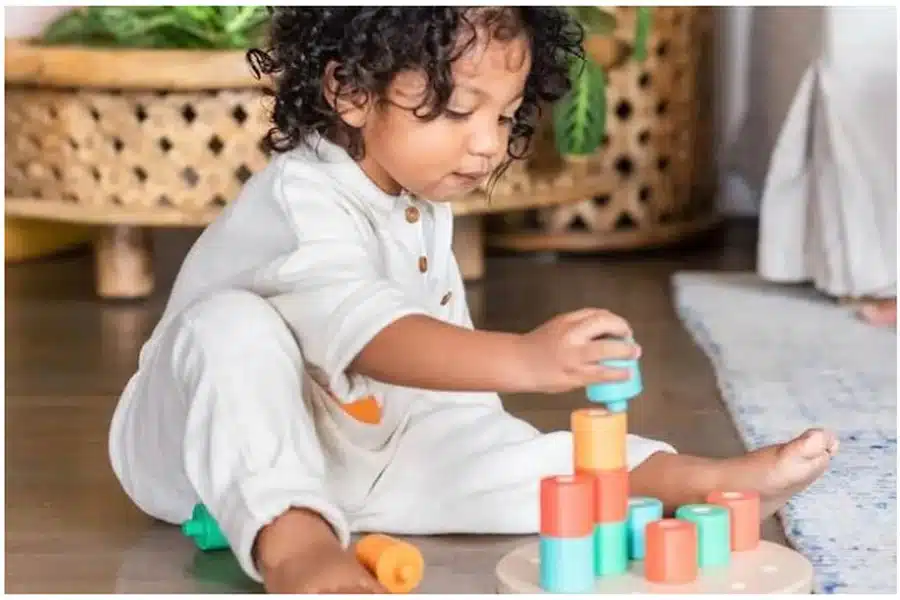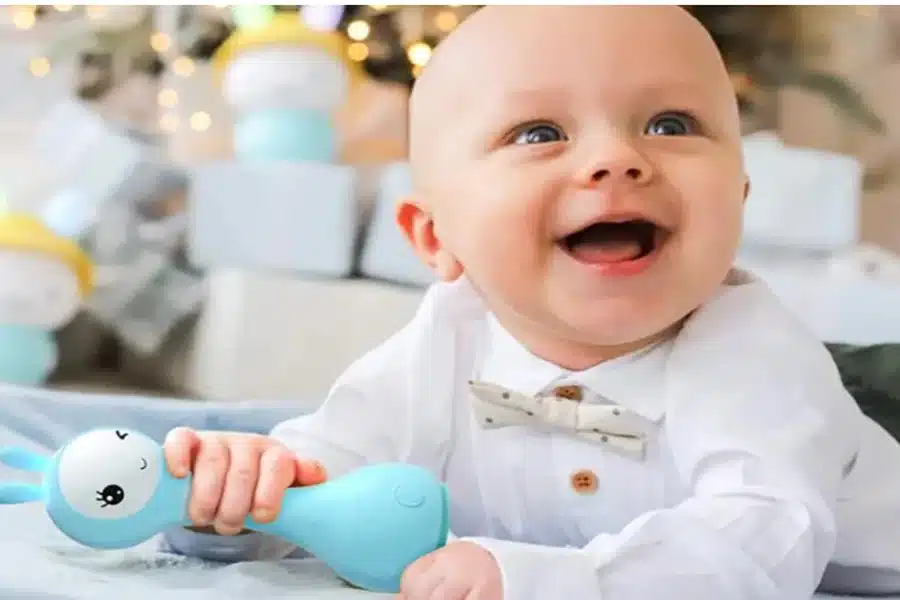Selecting the right toys for your baby goes beyond just keeping them entertained. when do babies start to play with toys? From as early as three months old, they begin grasping, shaking, and exploring objects—making playtime a crucial part of their development. The right toys can enhance motor skills, cognitive growth, and sensory awareness, while poorly chosen ones may pose safety risks or fail to engage your child. Parents often wonder how to balance fun, safety, and educational value when shopping for baby toys. Key factors include material safety, developmental benefits, and age-appropriateness, ensuring that playtime is both enjoyable and beneficial. In this article, we’ll guide you through essential considerations when buying baby toys, helping you make informed choices for your little one’s growth and happiness.
Safety First: Key Considerations
Non-Toxic Materials: Ensuring Baby’s Safety
Babies explore the world by putting objects in their mouths, so choosing non-toxic materials is critical. Look for toys labeled “BPA-free,” “phthalate-free,” and “lead-free,” especially for teething toys and rattles. Natural materials like untreated wood, organic cotton, and food-grade silicone are excellent choices because they don’t contain harmful chemicals. Avoid toys with strong chemical odors, as these may indicate unsafe manufacturing processes. For painted toys, ensure they use child-safe, water-based paints. Always check for safety certifications like ASTM F963 or EN71, which confirm compliance with international safety standards. Washing new toys before use can also remove any residual manufacturing dust or coatings.
Choking Hazards: Age-Appropriate Size and Design
One of the biggest safety concerns with baby toys is choking hazards. Small parts, detachable components, or loose strings can be dangerous for infants and toddlers. A simple rule is to avoid any toy or part that can fit through a toilet paper roll—this approximates the size of a baby’s airway. For younger babies, opt for one-piece toys without small beads, buttons, or breakable elements. Stuffed animals should have securely sewn eyes and noses, while rattles and teethers should be solidly constructed. Always check manufacturer age recommendations, as they indicate which toys are designed with safety in mind for specific developmental stages.
Durability: Choosing Toys That Last
Babies are naturally rough with toys—dropping, throwing, and chewing them—so durability matters. High-quality plastics, solid wood, and reinforced stitching on fabric toys can withstand daily use without breaking or fraying. Avoid toys with weak seams, flimsy plastic, or easily removable parts that could snap off. Well-constructed toys not only last longer but also remain safe over time, reducing the risk of sharp edges or small broken pieces. Investing in durable toys may cost more initially but saves money in the long run by avoiding frequent replacements. Additionally, sturdy toys can often be passed down to younger siblings or resold, making them a more sustainable choice.
Developmental Benefits: What to Look For
Stimulating Sensory Exploration and Engagement
Toys that engage multiple senses—sight, touch, sound—help babies make crucial neural connections. High-contrast black-and-white toys are ideal for newborns, whose vision is still developing, while colorful toys with different textures (soft, bumpy, crinkly) captivate older infants. Sound-producing toys, like rattles or musical instruments, enhance auditory processing and teach cause-and-effect relationships. Sensory boards with buttons, switches, and mirrors encourage exploration and fine motor skills. These toys keep babies engaged longer while supporting brain development. Rotating sensory toys every few weeks can also prevent boredom and continuously challenge your baby’s growing abilities.
Encouraging Motor Skills and Coordination
Toys that promote movement and hand-eye coordination are essential for physical development. Activity gyms with hanging toys encourage reaching and batting, strengthening arm muscles. Stacking rings or blocks help babies practice grasping and placing objects, refining fine motor control. Push-and-pull toys support crawling and walking by motivating babies to move toward or with them. Even simple toys like balls—whether soft, textured, or rattling—teach tracking, rolling, and throwing, which improve coordination. As babies grow, more complex manipulative toys, like shape sorters or pegboards, further challenge their dexterity and problem-solving skills.

Fostering Cognitive Development and Problem-Solving
Toys that challenge babies to think and experiment lay the foundation for cognitive growth. Shape sorters, nesting cups, and simple puzzles teach spatial awareness and logical reasoning. Cause-and-effect toys, such as pop-up buttons or musical instruments, help babies understand action-reaction relationships. Books with flaps or textured pages encourage curiosity and early language skills. Open-ended toys, like blocks or stacking toys, allow for creativity and experimentation, as there’s no single “right” way to play with them. These experiences build critical thinking and adaptability, skills that benefit learning later in life.
Conclusion
Choosing the right toys for your baby involves balancing safety, developmental benefits, and age-appropriateness. By prioritizing non-toxic materials, avoiding choking hazards, and selecting durable designs, you create a safe play environment. Toys that stimulate senses, motor skills, and cognitive growth turn playtime into valuable learning experiences. Observing your baby’s interests and developmental progress helps you select toys that keep them engaged and challenged. For parents seeking well-designed, developmental toys, Alilo offers a variety of options tailored to different ages and stages. With thoughtful selection, you can provide toys that are not only fun but also support your baby’s growth and curiosity.




